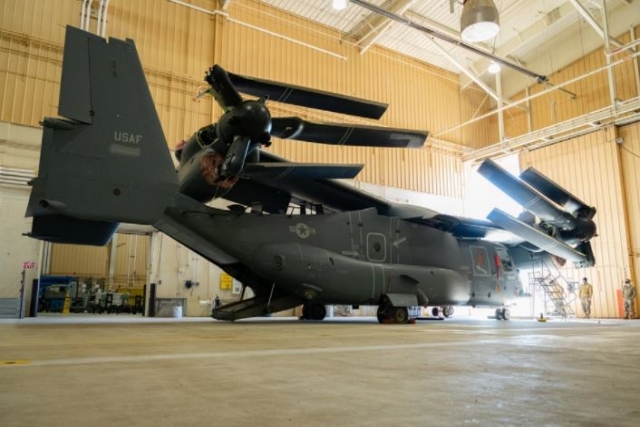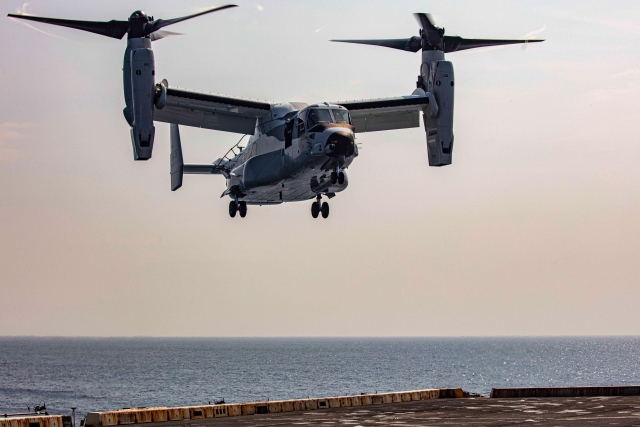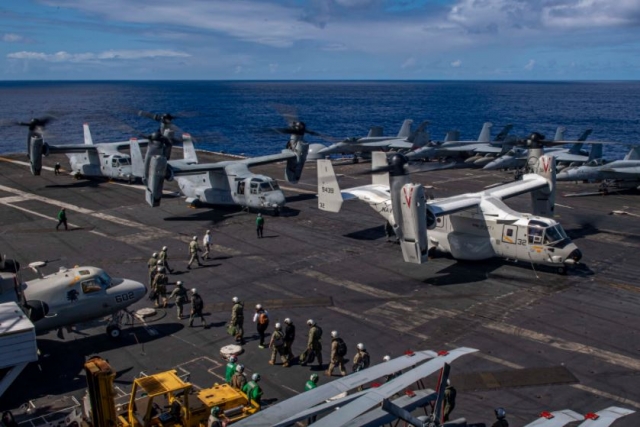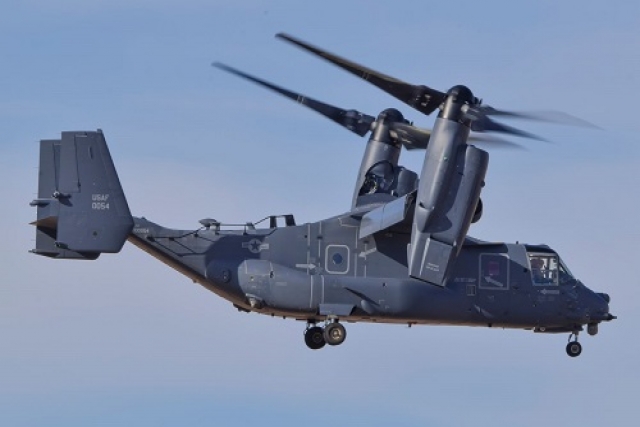American Ospreys Temporarily Grounded over Clutch Issues

After observing an uptick in hard clutch engagement events, the U.S. military decided to halt operations of an undisclosed number of V-22 Ospreys across three services until a component tied to the engine is replaced.
At issue is the input quill assembly, which attaches the Osprey’s engine to its prop-rotor gear box. The V-22 Joint Program Office announced a time limit for these parts’ use, after a recent data analytics effort showed a clear connection between the age of the input quill assemblies and the aircraft’s likelihood of experiencing a hard clutch engagement.
A hard clutch engagement event occurs when the clutch, driven by the engine, releases from the rotor system and suddenly reengages, sending an impulse through the drive train, potentially causing damage.
An official was quoted as saying by Defense News that the Marine Corps, Navy and Air Force Special Operations Command squadrons will continue training and operations with aircraft that have not met that time threshold as the others are replaced.
The Marine Corps has an inventory of 296 MV-22s, according to its spring 2022 aviation plan. Air Force Special Operations Command has 52 CV-22 aircraft, and the Navy is in the midst of receiving the 44 CMV-22s it purchased to support carrier strike groups.
Osprey aircrews are required to land immediately after such a hard clutch engagement. In the past, they have led to the replacement of Ospreys’ gear boxes and engines, meaning such an incident would qualify as a Class A mishap, costing millions of dollars each. These incidents, though, have not caused any deaths or injuries to personnel.
Another hard clutch engagement incident involving an Osprey occurred in the last weekend of January, a separate source told Defense News.
That incident underscored how important it was to address this problem, the source said, reinforcing the joint program office’s data showing hard clutch engagements were happening more frequently.
These engagement happens in Ospreys when the clutch connecting the propeller’s rotor gear box to its engine slips. Ospreys are designed to transfer the power load from that engine to the other engine immediately when this happens, which would allow it to keep operating on a single engine if one failed.
But these events cause a large transfer of torque as the original gear box’s clutch reengages and the power load transfers back, within milliseconds. That torque transfer causes the Osprey to lurch in ways that greatly alarmed Air Force Special Operations Command leadership when they saw a string of these incidents in summer 2022.
But, the Air Force and Marine Corps had different responses.
In August 2022, AFSOC commander Lt. Gen. Jim Slife ordered the grounding of the command’s 52 CV-22 Ospreys after two hard clutch engagement problems in the preceding six weeks and two other incidents that had occurred since 2017. Although nobody was injured in those four incidents, Slife said it was necessary to ensure airmen’s safety. The grounding was lifted two and a half weeks later, after putting steps into place for aircrews to manage the clutch problems and updating training to address these incidents.
The Marine Corps said then that it had known about the problem since 2010 and already had trained its pilots how to respond when such emergencies happen. It opted not to ground its Ospreys at that time.
The Navy had not experienced the problem with its new CMV-22 variants.
The Marine Corps flies its MV-22s differently than the Air Force. Marines typically fly MV-22s over water after launching them from amphibious ships. The service instructs pilots to hover shortly after takeoff and check instruments to make sure the clutch isn’t slipping before going on to conduct maneuvers.
The joint program office had 24 lines of effort related to the clutch, the official said ― including lab and flight tests of the component ― to better understand the hard clutch phenomenon, work on a “complete redesign of this clutch assembly” for potential future installation, and a data-mining effort looking at clutch performance across the V-22′s 700,000 total flight hours throughout three decades.
Squadrons for the time being will replace the input quill assembly on affected aircraft with the parts already in the supply system. They already have the tools, manuals and expertise to do the repair work themselves, the official told the report.
Once an input quills is replaced, the part will last for “years” before needing to be replaced again, the official said, based on the overall flight hours of the aircraft.
If the effort between the joint program office and the Bell-Boeing-led industry team develops a better system, that would be considered for implementation in the longer-term, the official said.













